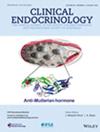Malignancy Risk of Paediatric Thyroid Nodules Classified According to the Bethesda System
Abstract
Introduction
Thyroid nodules are less common in children than in adults; however, when diagnosed, they carry a greater risk of malignancy. The Bethesda System for Reporting Thyroid Cytopathology uses six cytological categories to predict thyroid nodule malignancy using fine-needle aspiration. This study aimed to estimate the malignant potential of thyroid nodules in children using the Bethesda system.
Methods
We conducted a retrospective study of 121 patients aged ≤ 19 years who underwent thyroid surgery following fine-needle aspiration (FNA) of a suspicious nodule between 2001 and 2019 at two tertiary medical centres. All FNA specimens were evaluated and categorised according to the Bethesda classification system. The prevalence of malignancy for each cytological category was calculated and subsequently compared with the findings of the final pathology.
Results
The mean age at the time of operation was 14.8 years, and 79.5% of the patients were female. The mean nodule size was 24.8 mm. The distribution of nodules across Bethesda cytological categories, from B1 to B6, was as follows: 2, 50, 19, 17, 10, 23 nodules. An analysis of the final pathology reports revealed 66 malignant nodules (54.5%). The malignancy risk was 24% for nodules categorised as B2, 52.6% for nodules categorised as B3, 58.8% for nodules categorised as B4, and 100% each for nodules categorised as B5-B6.
Conclusions
Our findings indicate that the malignancy rates for all categories of the Bethesda system were higher in paediatric patients than in adults, including a substantial proportion of cytologically benign nodules. Moreover, our observed rates exceeded those previously reported in comparable studies of the paediatric population, as indicated by the American Thyroid Association guidelines. We propose a more intensive approach for paediatric patients with suspected clinical or sonographic features.

 求助内容:
求助内容: 应助结果提醒方式:
应助结果提醒方式:


